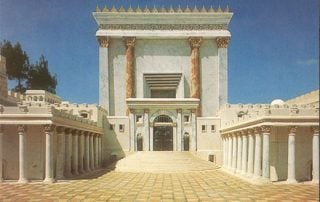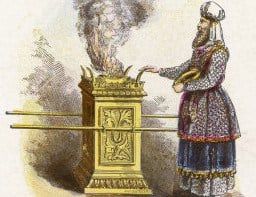Mishkan – a Metaphor for Quantum Reality, II
Continuing the theme of my last post, Mishkan – a Metaphor for Quantum Reality, the analogy between the Tabernacle (“Mishkan”) and quantum reality goes even deeper. The quantum world is best described today by the Quantum Field Theory. According to this theory, there are no particles, only fields. When we interact with a field, it manifests itself as a quantum of the field, which, to some extent, looks and behaves like a particle. For example, when we interact with an electromagnetic field, it manifests itself as a photon – a quantum of the electromagnetic field. An electron, according to the Quantum Field Theory, is not really a particle but a quantum of the electron field, which is a quantum field that is spread across the entire universe. This quantum is an excitation of [...]



